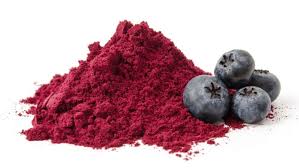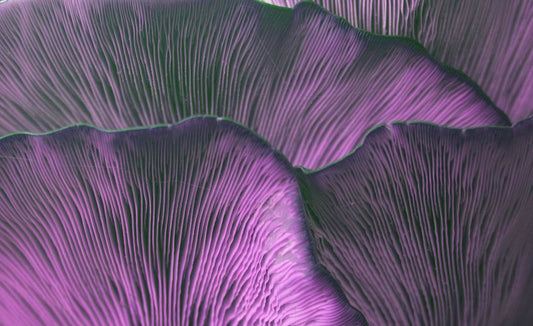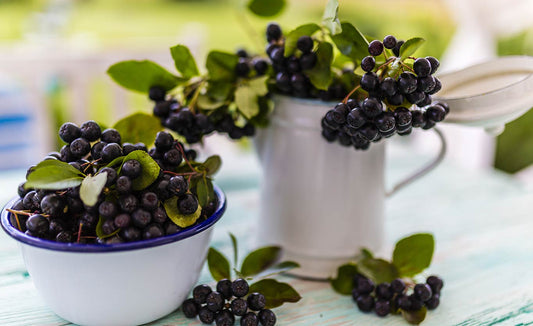Anthocyanins

Anthocyanins are nature’s brilliant gift, responsible for the stunning hues that paint flowers, fruits and vegetables with vivid colors ranging from red and purple to blue. Beyond their aesthetic appeal, these pigments belong to a powerful class of antioxidants, offering a myriad of health benefits. In this blog post, we will delve into the fascinating world of anthocyanins, exploring their sources, health benefits and the scientific marvel behind their vibrant colors.
What are Anthocyanins?
Anthocyanins are water-soluble pigments belonging to the flavonoid group, which is a class of compounds widely distributed in the plant kingdom. The name “anthocyanin” is derived from the Greek words “anthos,” meaning flower, and “kyanos,” meaning blue. These pigments are responsible for the red, purple, and blue colors observed in various parts of plants, such as fruits, flowers, leaves, and stems.
Sources of Anthocyanins:
Anthocyanins are found in a diverse range of fruits, vegetables, and flowers. Some of the most common sources include:
Berries:
Aronia berries, blueberries, strawberries, raspberries, and blackberries are rich sources of anthocyanins. These compounds contribute not only to the vibrant color of the berries but also to their antioxidant properties.
Cherries:
Both sweet and tart cherries contain anthocyanins, contributing to their red and purple hues. Cherries are known for their anti-inflammatory properties and may aid in managing conditions like arthritis.
Red Cabbage:
The deep purple color of red cabbage is a result of anthocyanins. Including red cabbage in your diet can provide a colorful and nutritious boost.
Eggplant:
The skin of eggplants contains anthocyanins, contributing to their purple color. These compounds may offer health benefits when included in a balanced diet.
Health Benefits of Anthocyanins
Powerful Antioxidant Properties
Anthocyanins exhibit potent antioxidant activity, helping to neutralize harmful free radicals in the body. This antioxidant capacity is linked to a reduced risk of chronic diseases, including cardiovascular issues and certain types of cancer. Heart Health: Studies suggest that anthocyanins may contribute to heart health by improving blood vessel function, reducing blood pressure, and lowering levels of LDL cholesterol. These effects can collectively support cardiovascular well-being.
Anti-Inflammatory Effects
Chronic inflammation is a common factor in various health conditions, including arthritis and inflammatory bowel diseases. Anthocyanins have demonstrated anti-inflammatory properties, potentially aiding in the management of inflammatory conditions.
Cognitive Function
Emerging research suggests a link between anthocyanin consumption and improved cognitive function. These compounds may play a role in protecting the brain from oxidative stress and inflammation, potentially reducing the risk of age-related cognitive decline.
Blood Sugar Regulation
Anthocyanins may contribute to better blood sugar control by improving insulin sensitivity. This can be particularly beneficial for individuals with or at risk of type 2 diabetes.
The Science Behind Anthocyanin Colors
The vibrant colors of anthocyanins are a result of their unique chemical structure and response to pH levels. In neutral or basic conditions, anthocyanins appear red, while in acidic environments, they showcase shades of purple and blue. This pH-dependent color change is a fascinating phenomenon, and it explains why certain fruits or flowers may exhibit different colors under varying conditions.
Anthocyanins are not merely nature’s paintbrushes; they are powerful antioxidants with a spectrum of health benefits. By adding a variety of colorful fruits and vegetables to your diet, you can harness the potential advantages of these vibrant pigments. Whether it’s protecting your heart, reducing inflammation, or supporting cognitive function, anthocyanins offer a colorful and delicious way to promote overall well-being. Embrace the rainbow of nature’s bounty and let anthocyanins brighten both your plate and your health.
Many purple fruits, such as blackberries and blueberries, are excellent sources of vitamin C, which is essential for immune function, skin health, and collagen production.
Purple vegetables like purple potatoes and eggplants contain potassium, an important mineral that supports heart health, helps regulate blood pressure, and aids in muscle and nerve function. Purple fruits and vegetables are often rich in dietary fiber, promoting digestive health, regular bowel movements, and supporting a healthy weight. Fiber also helps control blood sugar levels and reduces the risk of cardiovascular diseases.
Cancer Prevention
Some compounds found in purple foods, including anthocyanins, have demonstrated anti-cancer properties. These substances may help inhibit the growth of cancer cells and protect against certain types of cancer. Purple vegetables like purple cabbage and purple carrots contain compounds such as lutein and zeaxanthin, which are beneficial for eye health. These antioxidants may help protect the eyes from age-related macular degeneration and other vision issues.
Anti-Aging Properties
The antioxidants in purple foods, including anthocyanins and resveratrol, may have anti-aging effects by neutralizing free radicals and reducing oxidative stress. This can contribute to healthier skin and may slow down the aging process at the cellular level.



